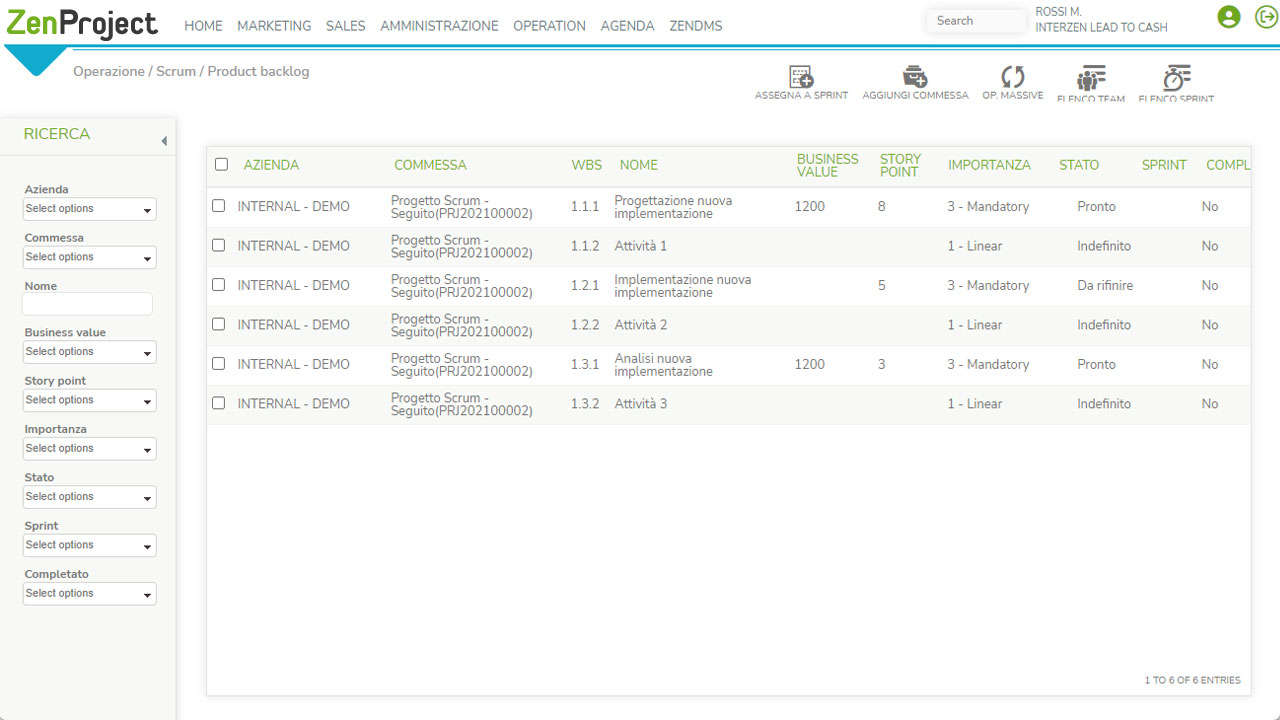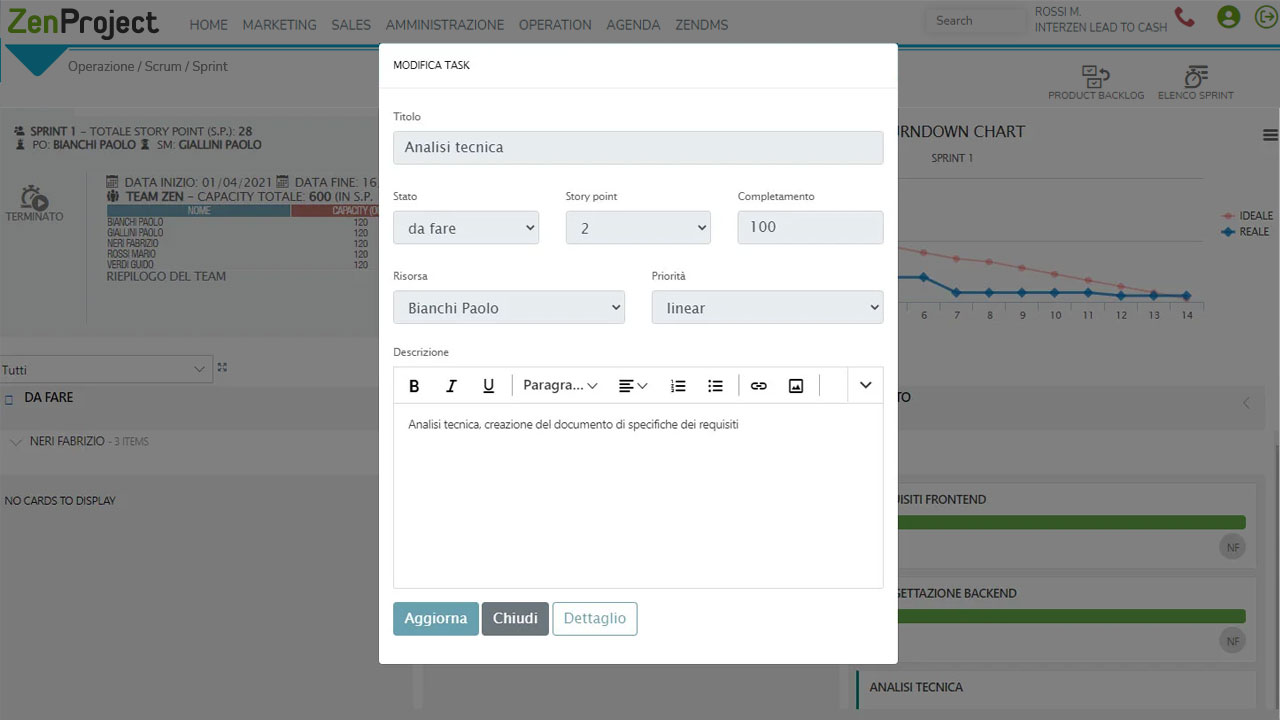It is the specific module of ZenProject dedicated to project management with SCRUM methodology.
Sarting from Agile Manifesto ,within the ZenProject solution, a project management module in Scrum mode has been developed.
The aim is to offer ZenProject users even more flexible project management. You will then have the option to choose whether to manage the development of an order / project using the standard method or whether to make use of the Scrum framework.
Individuals and interactions more than processes and tools. Working software rather than exhaustive documentation. Collaboration with the customer rather than contract negotiation. Responding to change rather than following a plan.
ZenProject managed to make the best of two methodologies: SCRUM planning and activity time planning (GANTT).
ZenProject's SCRUM module
THE PRODUCT BACKLOG
From the Scrum section of ZenProject the orders to be managed with Scrum are chosen/selected (referring to the tasks of the individual orders), on which the characteristic properties of the Scrum framework are defined: – Business value – Story point – Importance – Status
THE TEAM AND THE RESOURCES
Selecting them from ZenProject users in which the following roles are distinguished: – Product Owner – Scrum Master – Team members
THE SPRINT
In which all the tasks assigned to the various team members are shown, which pass from the “To do” status to the “Done” status. Within the Sprint, an analysis of the “Capacity” of the team is conducted by ZenProject in order to monitor the “Velocity” during the Sprints.
BURNDOWN CHART
ZenProject also makes the Burndown Chart available to users: the graph that highlights the progress of the Sprint allowing you to monitor the velocity of the team, thanks to a graphical interpretation of the relationship between the ideal progress of the work done and the real one in terms of completed tasks.
The Scrum methodology in a nutshell
it is based on the division of the project into several cycles, called Sprints and on the division of tasks distributed on the basis of 3 roles: Product Owner, Scrum Master and Development Team. It’s about an incremental approach optimization, predictability and risk control.
Product Owner: defines the work to be done and the order in which it is completed. He studies market requirements, gathers feedback from customers, management, and anyone with an interest in the product (stakeholders), and sets development priorities for the Scrum Team.
Scrum Master: is the process manager. Expert connoisseur of the Scrum methodology, knows how to apply it and makes sure that the Team follows the rules for the project to be successful.
Development Team: it is the work team, made up of 3 to 9 people, which actually completes the Sprints. Product Owner, Scrum Master and Development Team together make up the Scrum Team.
Another essential component of the Scrum methodology are the artifacts, i.e. the way in which Scrum summarizes and visualizes the work and the value by dividing them into:
Product Backlog: the list of all, the features, functions, requirements, improvements and changes, to be made continuously and dynamically to the product in future versions. The product backlog contains rough estimates of both the business value, both of the effort necessary to develop them; and the latter values are often expressed by means of story point.
Sprint backlog: the list of work that the development team must perform during the sprint.
Increment: is the Product Increment that is generated each Sprint, the sum of all Product Backlog items completed during a Sprint and previous Sprints. Artifacts are used to make the Scrum Team efficient and performing as:
1. allow you to establish work priorities based on value and importance of tasks to be performed 2.make team members interact with each other and generate maximum value.


